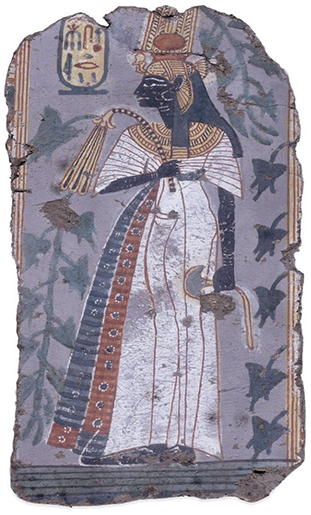The Postmodern era begins around the end of World War II, in 1945, and The Vietnam War: The Cold War,1955 – 1975. In the USA political and racial turmoil contribute to the reasons why Martin Luther King, President John F. Kennedy, and his brother Senator Robert F. Kennedy are assassinated. People learn to exchange naivety for harsh reality. Postmodern painting reflects trained artists’ responses. No longer dependent upon classical teachings, some artists begin to incorporate image-based commercial products and services. This collection of paintings illustrates the unleashing of artistic freedom.
Romare Bearden (1911 – 1988) is born in Charlotte, North Carolina. His life encompasses a broad range of intellectual, scholarly, and humanitarian interests, demonstrated by lifelong support of young, emerging artists.
Bearden takes extensive courses in art and graduates with a degree in education, from New York University. The avid learner spends time at the Art Students League in New York and later, the Sorbonne in Paris. At one point, he is the editorial cartoonist for the Baltimore Afro-American.
For a couple of decades Bearden is a social worker with the New York City Department of Social Services. His nights and weekends are devoted to painting.
Solo exhibits in Harlem and his first solo show in Washington, DC, in 1944, are noteworthy events. Eventually, the artist wins praise throughout the United States and Europe. Honorary doctorates are bestowed upon him by Pratt Institute and Carnegie Mellon University.
President Reagan presents Bearden with the National Medal of Arts Award, in 1987.

Postmodern, American, Abstract Collage (1970s) Black artists respond in different ways to the harsh events of the previous decade.
Bearden goes back to ancient history for Patchwork Quilt. His reclining figure bears a resemblance to this Egyptian tomb relief. Notice that the queen and Bearden’s figure are depicted in profile. His use of black and brown skin tones for his figure and this image brings an unexpected even greater integrity to Bearden’s work.
The Civil Rights movement, which begins in mid - 20th century, is not the same following Dr. Martin Luther King’s death from a gunshot wound. This hate-filled tragedy takes place during a speech he is giving in Memphis, Tennessee, in 1968.
Staunch Civil Rights advocate U.S. Senator Robert F. Kennedy signs The Civil Rights Act of 1968. He is assassinated in the same year. Likewise, the former President John F. Kennedy is assassinated, five years earlier.
Universities jump on board to promote African-American studies. They think the time has come to mend fences.

Go on to Describe, Analyze, Interpret & Conclude. Contact me for help.
Patchwork Quilt (1970) Collage: pasted cloth scraps, paper, synthetic polymer paint on composition board. 36 x 48 in. (91 x 122 cm.)
Bearden’s process involves assembling miscellaneous materials for Patchwork Quilt to evoke the distinctive African-American domestic tradition. The tradition derives from slave crafts and the necessity of making artwork from available scraps of material.
Picasso is a favorite of Bearden. He pays homage to the 20th century icon by skipping traditional perspective for a flat, Picture Plane.
Notice Bearden’s subtle, but important color selections, in Patchwork Quilt. Perhaps you can see Picasso’s influence again, in Les Demoiselles d’Avignon in the Modern Collection. See them side-by-side, if you can.
Bearden is modest, interesting, and amusing during an interview at Duke University. View Inside New York’s Art World: Bearden, 1979.